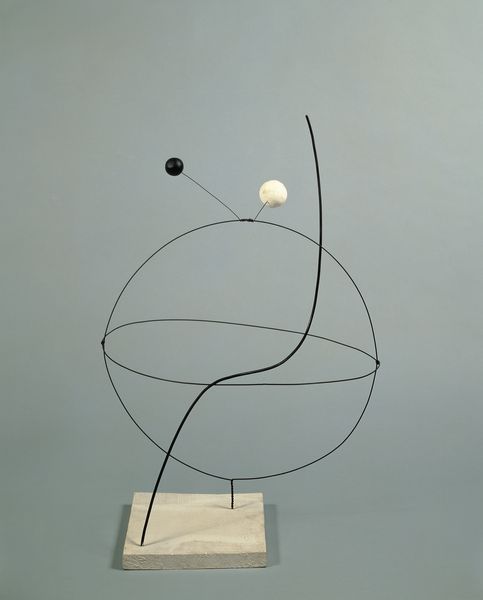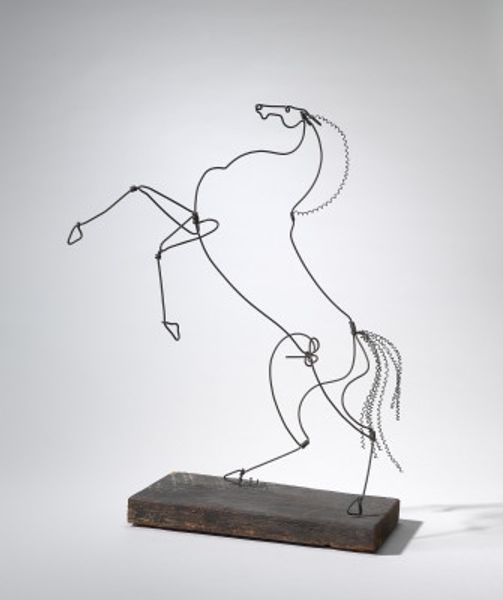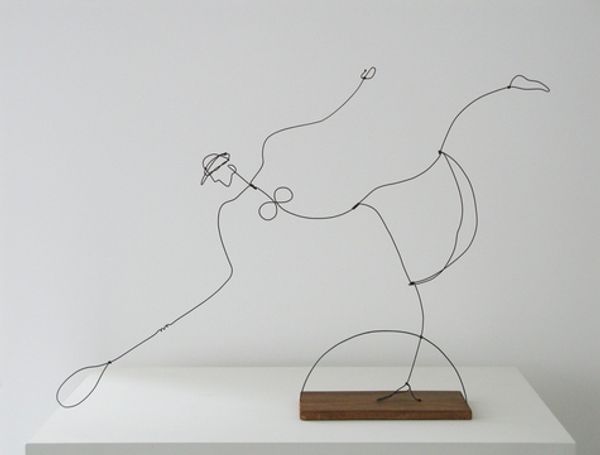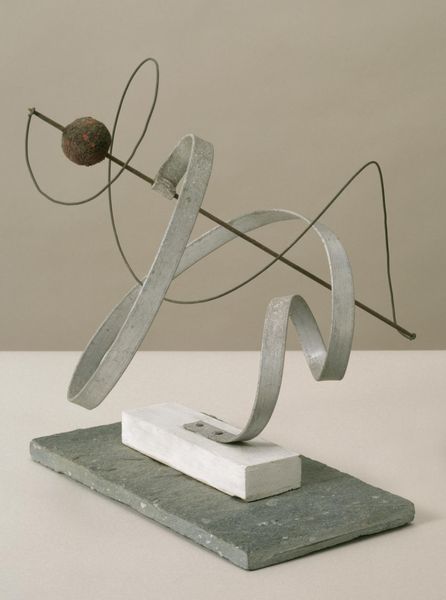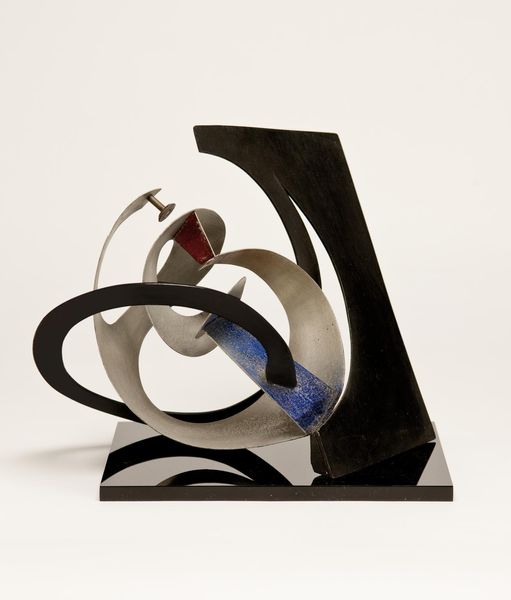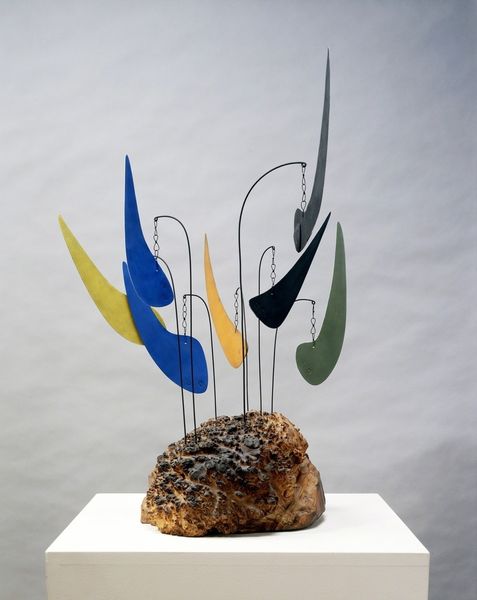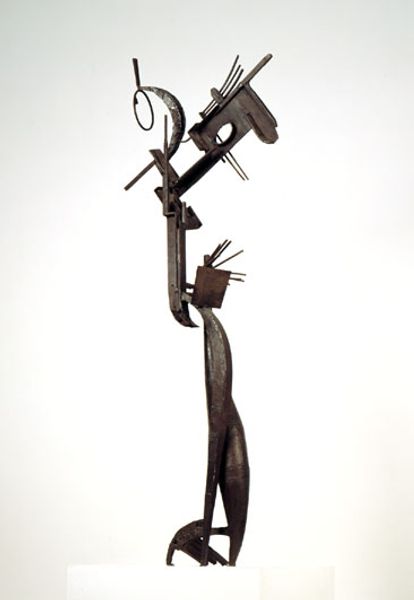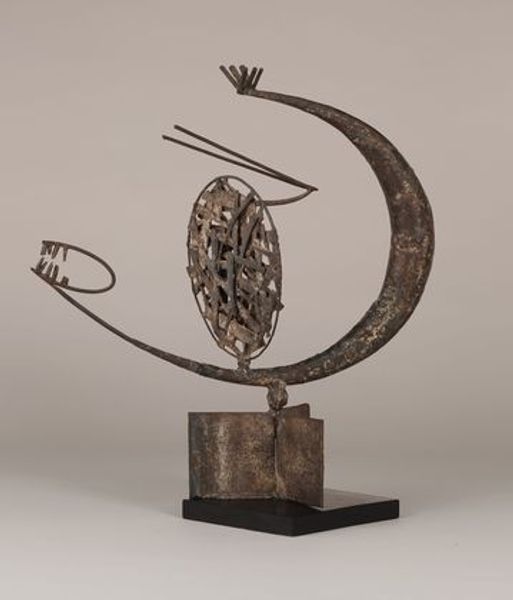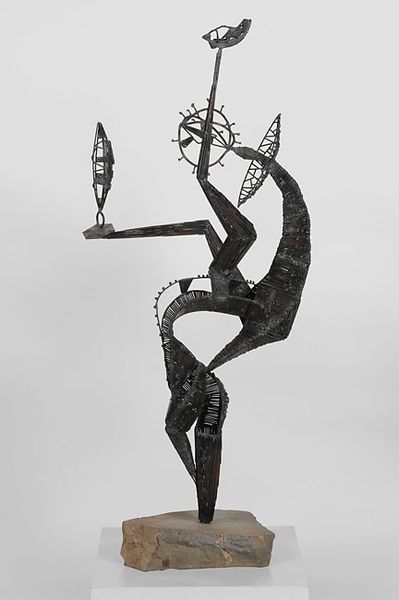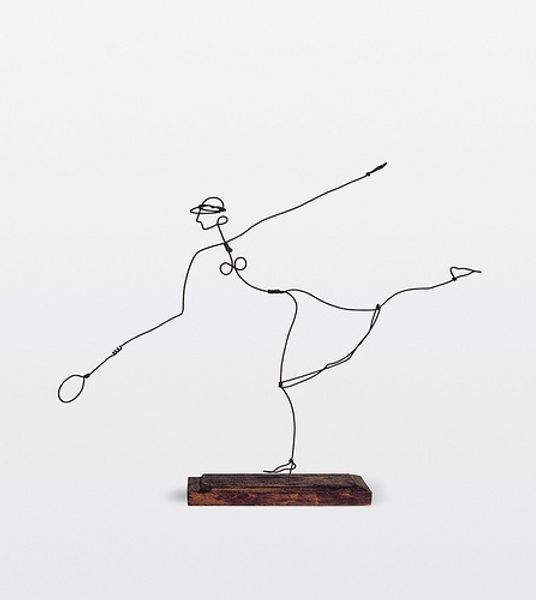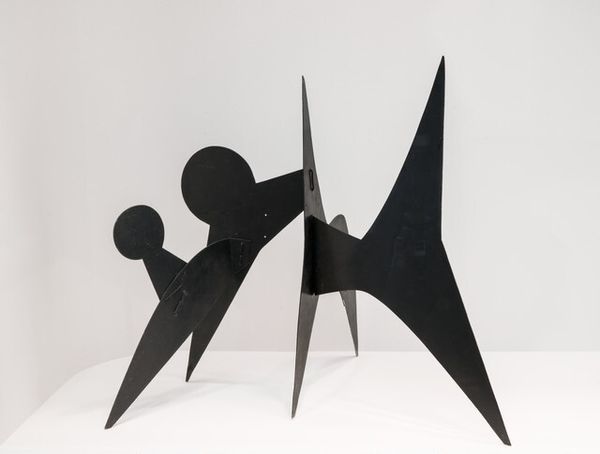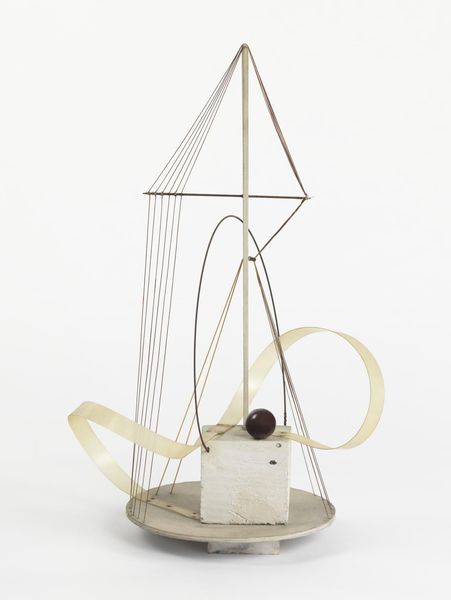
Copyright: Alexander Calder,Fair Use
Editor: Here we have Alexander Calder’s "Sea Gull," created in 1927. It’s a sculpture, largely constructed from metal wire and presented on a wooden base. I’m really drawn to the sense of lightness he’s achieved with such a rigid material. What catches your eye when you look at this piece? Curator: It is precisely that dialectic tension between the chosen medium—the rigid metal—and the implied movement, the potential energy suggested by the subject. Calder masterfully uses line, or rather, wire, to define form. Note how the essential characteristics of the bird are captured through the reductive manipulation of the material. Do you observe how the individual lines function both independently and as a cohesive whole? Editor: I do! The wire almost seems to float in space, especially where it defines the wings and body. It's like a drawing brought into three dimensions. The simplicity is so effective, and how would you consider the role of the base? Curator: The base provides not merely support but visual grounding. It anchors the ethereal quality of the wire sculpture, creating a necessary counterpoint. Furthermore, the contrast in materials and their respective textures contributes significantly to the overall composition. What observations can we make about its formal elements? Editor: Thinking about pure form, it’s amazing how Calder uses line and space to suggest the sea gull’s presence. It strips the bird down to its most basic visual elements, but still manages to convey its essence. It's definitely much more than just a bird, it is a dynamic expression of form, beautifully considered in every line and curve! Curator: Indeed! By attending to the materiality and the manipulation thereof, we perceive how the artist has masterfully communicated an evocative figuration with astonishing economy.
Comments
No comments
Be the first to comment and join the conversation on the ultimate creative platform.
